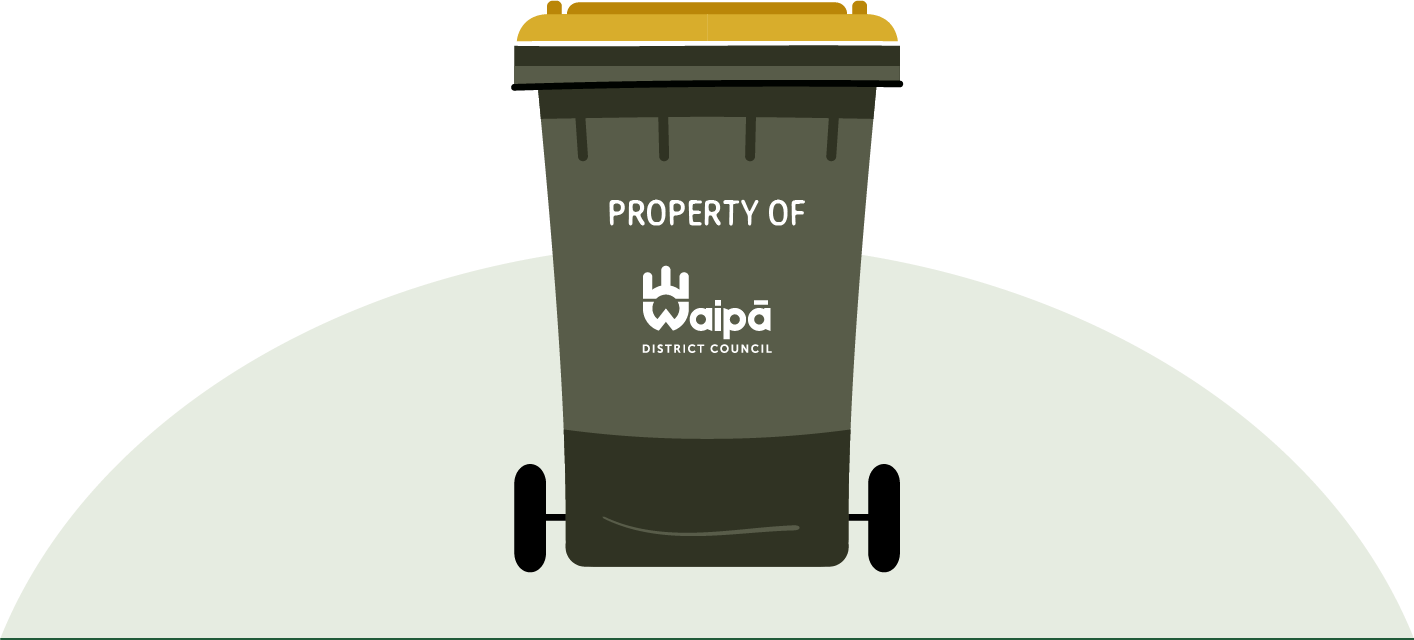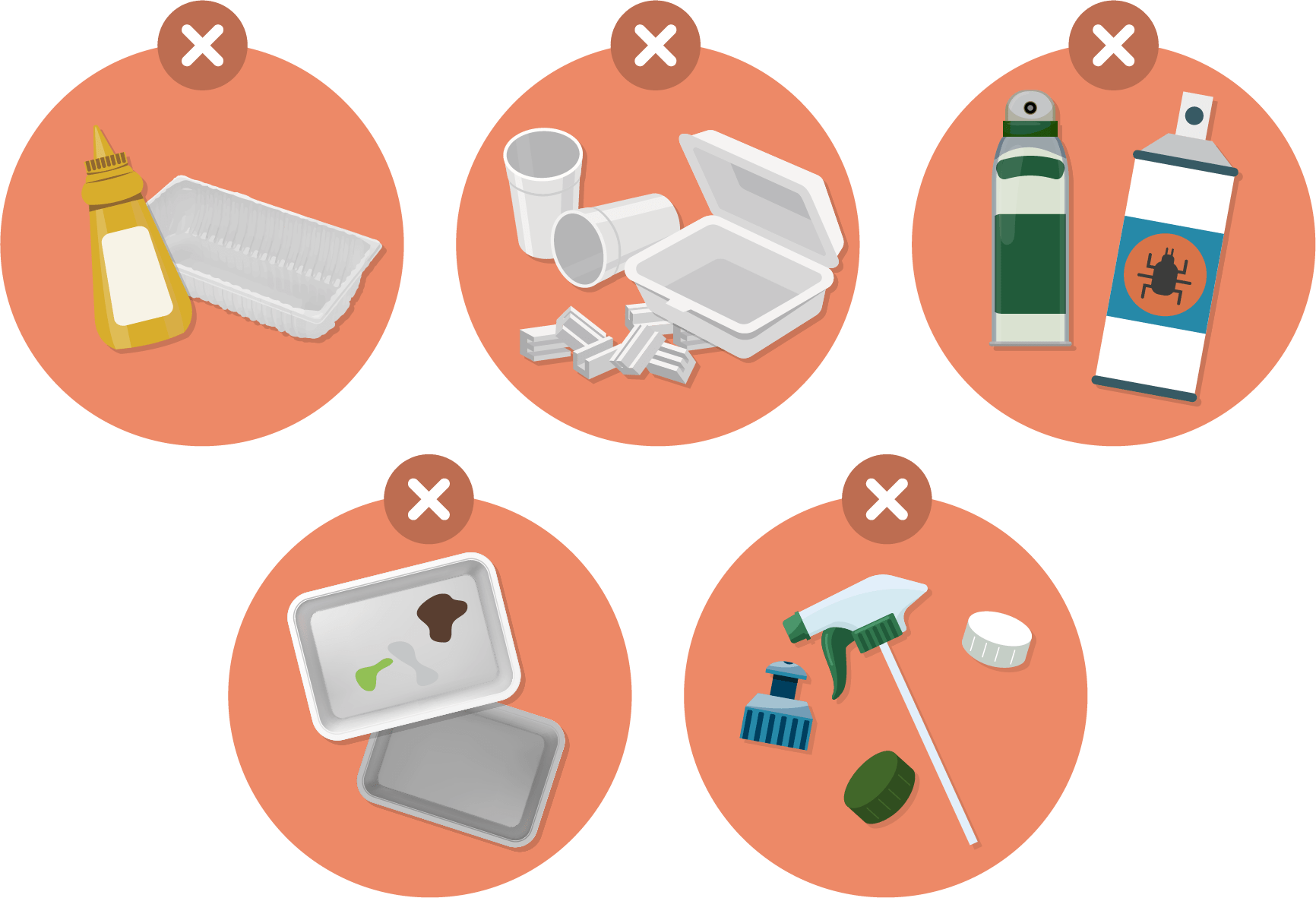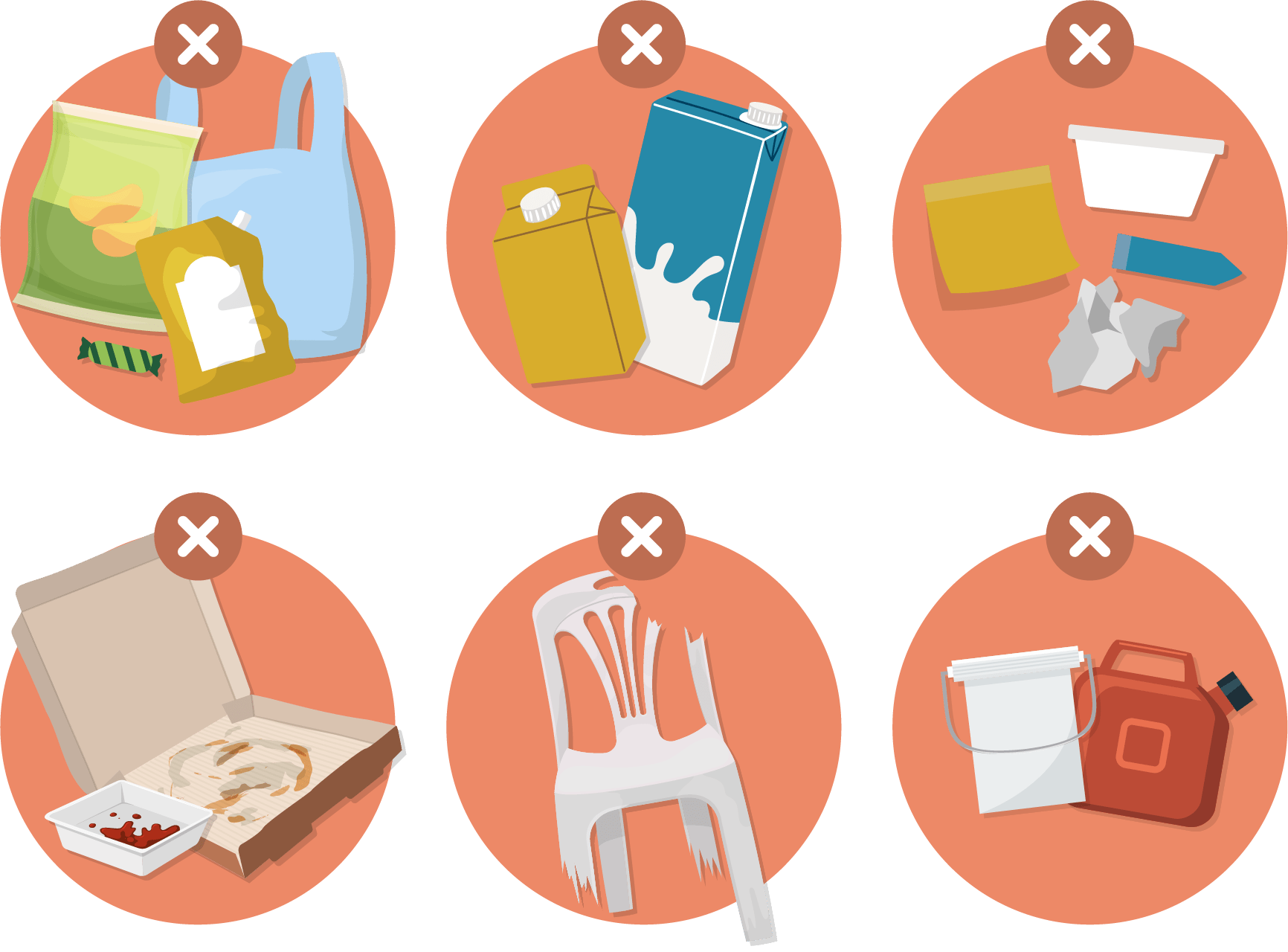What can I put in my recycling bins?
Can I recycle this?
Don't know what can be recycled? Try our simple item sorter below. Just start typing your item and click to find out.
In Waipā, all households are provided with two wheelie bins for recycling - whether you live in town or on a farm:
All recycling MUST be clean to be recycled – that means giving jars and food tins a decent scrub out, so that no food remains. If your recycling is dirty, it can’t be processed and will have to be sent to landfill.

A 240-litre bin for mixed recycling, collected every two weeks

A 140-litre bin for glass, collected every month
The blue glass recycling bin
The blue wheelie bin is for glass (from food or drink bottles) and jars only.
All the glass we collect is recycled into bottles and jars for the food and beverage industry in New Zealand, so that's why we only collect food grade glass.
Please make sure your bottles and jars are empty before you recycle them – dirty recycling can’t be processed and will be sent to landfill. Any plastic or metal lids should be put in the rubbish bin please – these are too small to be sorted and collected, and are often made from different materials which means they can’t be recycled.
Anything else needs to go into your rubbish bin – this includes face cream jars, drinking glasses, perfume bottles, medicine bottles, vases, pyrex, and lightbulbs.


Can I pay for an extra glass wheelie bin?
No. If you have more glass recycling that the 140-litre bin can hold, you will need to take it to a transfer station (there may be a charge involved) or store your glass until your next collection.
The 'Simple Seven' for your yellow wheelie bin
There are only seven things that should go into your yellow wheelie bin:

What CAN’T go in your wheelie bin?
Plastics #3 , 4 , 6 and 7:
These are plastics like some squeeze sauce bottles, trays that you buy sliced salami on, and soft plastics.
Polystyrene:
Packaging beans, moulded shapes, foam cups.
Aerosols (like fly spray or spray deodorant):
These are of low value to metal recyclers and are a potential danger to our staff (they could get popped in the collection process!).
Aluminium foil or trays:
Another low value material, likely to be contaminated with food!

Lids:
Due to their small size, they fall through the sort line machinery and are unlikely to make it to their end destination to be made into a new item. Some lids are made of mixed materials – like a metal outer and plastic liner - and sometimes the lid is a different type of plastic to the bottle or container.
Plastic bags, film and soft plastics:
Any plastic you can scrunch up into a ball is no good for our recycling machines. They get caught and create breakdowns. You can find your nearest soft plastics collection drop-off point here: recycling.kiwi.nz
Cartons:
These are cardboard cartons with a foil, plastic or waxed layer. They look like cardboard but are lined with plastic and are very hard to separate and recycle. The most common types are milk, soy, juice cartons and coffee cups. Find a community collection point run by SaveBoard, or drop them off at their factory in Frankton, Hamilton: saveboard.nz/drop-off-cartons
Recycling with food residue
Any recyclable products with food residue on them cannot be recycled in your wheelie bin. Wash them out and then they can go in the bin.
Small plastics or papers
These are just too small to be sorted and baled. For containers, please don’t put anything smaller than a hummus pottle in your yellow wheelie bin (three-dimensional items smaller than 50mm at their widest point are not accepted), and when it comes to paper – nothing smaller than a Post-It note (two-dimensional items smaller than 100mm by 140mm are too small to be sorted and recycled).
Large hard plastics
Items like a broken plastic chair, or your old laundry basket, are too large to be sorted safely, and any item that holds more than four litres is not accepted in wheelie bins across New Zealand. Drop these at your local transfer station instead!
Industrial containers
Anything used for engine oil, fuel, solvents, paints, and household or garden poisons, is not safe to be hand-sorted by our team. Check out our local resource list for where you can dispose of hazardous household waste safely. You can also ask your local transfer station or sign up to our newsletter to be notified when we are running our next drop-off event for household hazardous waste (these usually take place at the end of each year).

Know your plastics
We only collect #1, 2 & 5 plastics because these are the only ones with enough commercial value to be recycled into something new. We know it’s sometimes hard to read the numbered triangle, and we are advocating to the government to make that bigger for all of us! But here are some guidelines to help you identify plastic type:

#1. PET (Polyethylene Terephthalate) – RECYCLABLE
#1 PET is one of the easiest plastics to recycle and therefore the most valuable. More than 47 percent of all plastic containers and bottles in New Zealand’s recycling is plastic type #1. PET is most commonly used for soft drink and water bottles (clear and coloured bottles) in a range of sizes. Other uses of PET include cleaning containers, personal care bottles, some meat trays, punnets for berries and tomatoes, and plastic clam shells for muffins and baked goods. Check the recycling triangle to see if your plastic container is a #1. If it is, pop it into your yellow mixed recycling bin.
#2. HDPE (High density polyethylene) – RECYCLABLE
Like PET, #2 HDPE is also easily recyclable. About 28 percent of plastics in Aotearoa’s recycling are #2 plastic bottles and containers. In a household setting, HDPE is most commonly used for dairy containers such as milk and cream bottles, and some ice-cream containers, juice bottles, shampoo, cleaning and detergent bottles. Check the recycling triangle to see if your plastic container is a #2. If it is, and it's clean, pop it into your yellow mixed recycling bin.
#5. PP (Polypropylene) – RECYCLABLE
Polypropylene is a hard but flexible plastic with a waxy surface that is versatile and easy to recycle. It makes up around 12 percent of all recycled plastics. In a household setting, #5 is mainly used for a wide range of food packaging such as margarine containers, some yoghurt containers, take away containers, ice cream containers and dips. This packaging comes in many colours, including clear, black and white. Many harder and longer lasting plastic items are #5, but we cannot recycle those types, e.g. reusable lunchbox containers, laundry baskets etc. If it’s a single use #5, we can likely recycle it.
Remember: If in doubt, leave it out, and check out our "Can I recycle this?" tool at the top of the page. Please remember that all these plastics need to be clean before you put them into your yellow recycling bin, so give them a quick rinse or scrub the next time your sink is full.

What happens if I put #3, 4, 6 & 7 plastics in my recycling bin?
These plastics and other non-recyclable materials will cause contamination. Although the local recycling sorting facility has staff who manually remove non-recyclables, it is not cost-effective to do this. If the recycling loads contain a significant amount of non-recyclable plastics and other contamination, it could mean these loads will end up going straight to landfill. This costs ratepayers money as the cost of processing contaminated loads is more expensive, and in some cases outweighs profits from materials that can be recycled.
Recycling rules genius?
Think you are awesome at recycling? Test your knowledge with our awesome recycling game at recyclewaipa.co.nz
Still not sure what is accepted in your recycling wheelie bins? Check out our handy recycling tool at the top of the page!